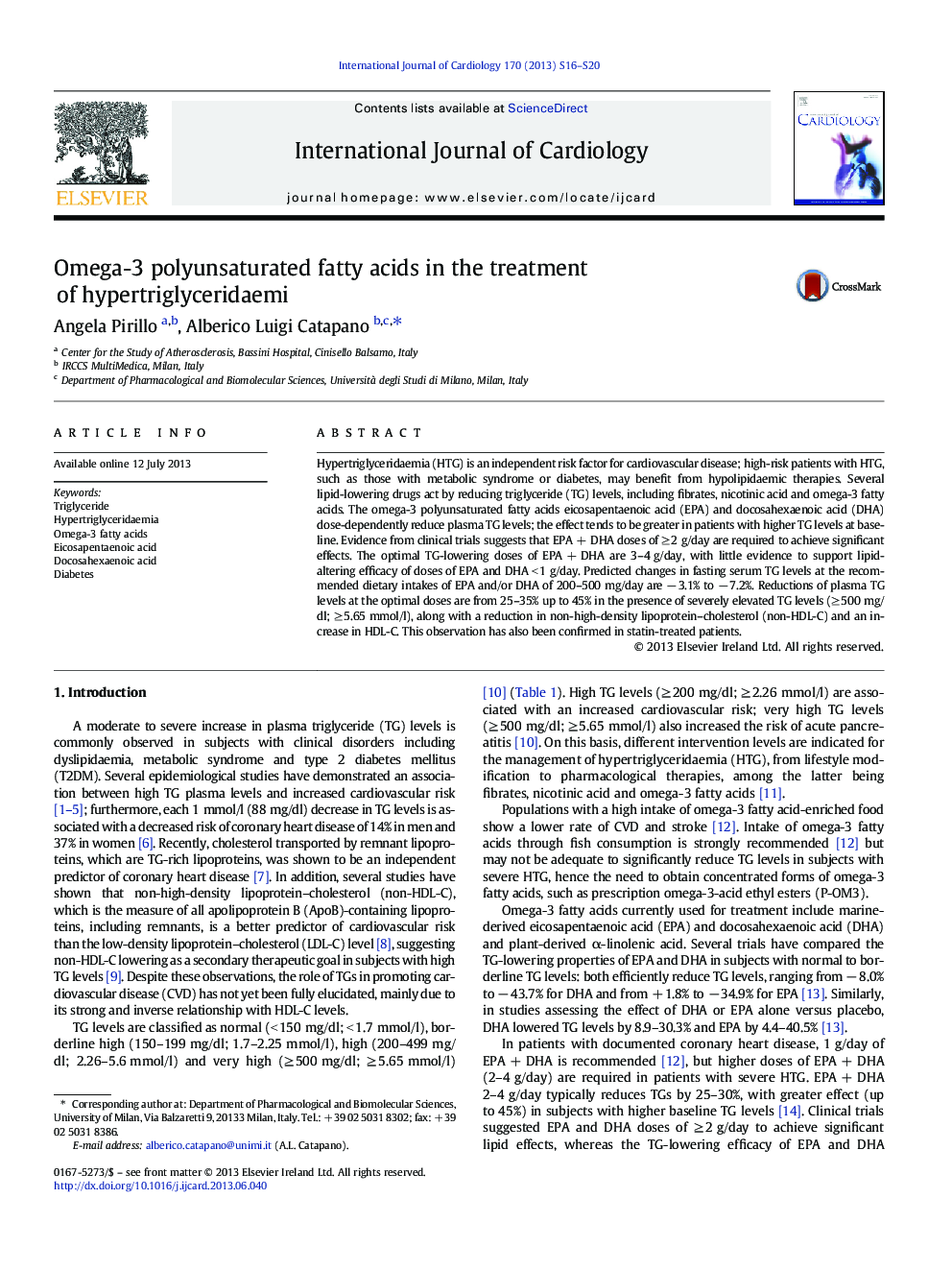| Article ID | Journal | Published Year | Pages | File Type |
|---|---|---|---|---|
| 2929312 | International Journal of Cardiology | 2013 | 5 Pages |
Hypertriglyceridaemia (HTG) is an independent risk factor for cardiovascular disease; high-risk patients with HTG, such as those with metabolic syndrome or diabetes, may benefit from hypolipidaemic therapies. Several lipid-lowering drugs act by reducing triglyceride (TG) levels, including fibrates, nicotinic acid and omega-3 fatty acids. The omega-3 polyunsaturated fatty acids eicosapentaenoic acid (EPA) and docosahexaenoic acid (DHA) dose-dependently reduce plasma TG levels; the effect tends to be greater in patients with higher TG levels at baseline. Evidence from clinical trials suggests that EPA + DHA doses of ≥ 2 g/day are required to achieve significant effects. The optimal TG-lowering doses of EPA + DHA are 3–4 g/day, with little evidence to support lipid-altering efficacy of doses of EPA and DHA < 1 g/day. Predicted changes in fasting serum TG levels at the recommended dietary intakes of EPA and/or DHA of 200–500 mg/day are − 3.1% to − 7.2%. Reductions of plasma TG levels at the optimal doses are from 25–35% up to 45% in the presence of severely elevated TG levels (≥ 500 mg/dl; ≥ 5.65 mmol/l), along with a reduction in non-high-density lipoprotein–cholesterol (non-HDL-C) and an increase in HDL-C. This observation has also been confirmed in statin-treated patients.
